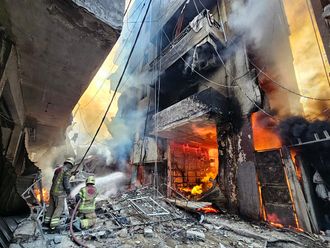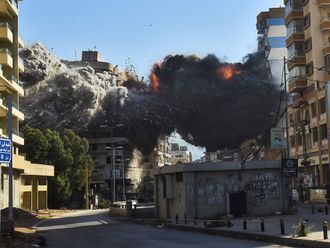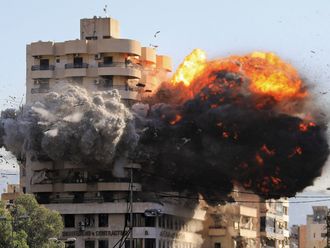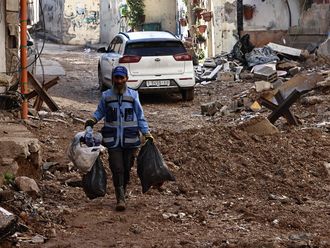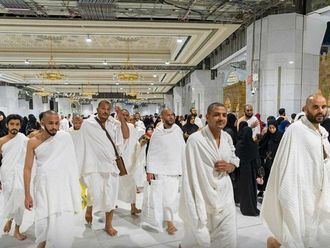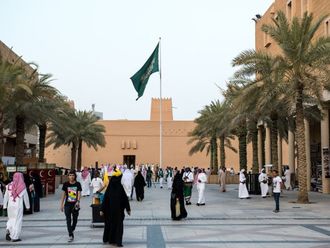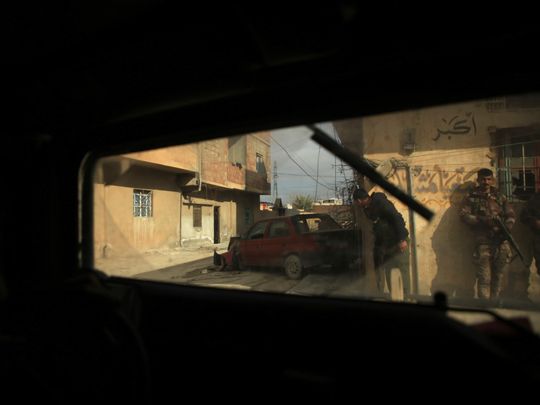
Hasakeh, Syria: Kurdish forces geared up for an assault Monday on a northeast Syria prison that Daesh fighters stormed last week, raising concern over the fate of hundreds of under-age detainees.
Daesh fighters on Thursday rammed two explosives-laden vehicles into the Kurdish-run Ghwayran prison to launch a brazen jailbreak operation that has plunged the city of Hasakeh into chaos.
The attack, the group’s biggest since their once-sprawling proto-state was defeated in 2019, has already killed more than 150 people, including more than 100 among Daesh ranks.
Fighting drove hundreds of residents of Syria’s largest Kurdish city to flee, but clashes receded on Monday, with the presence of hundreds of children complicating an assault.
The Syrian Observatory for Human Rights war monitor said elite Kurdish forces had moved armoured vehicles inside the main prison yard, ahead of a possible attempt to storm the facility.
The autonomous Kurdish authorities running the region imposed a state of emergency across Hasakeh, after at least seven civilians were caught in the crossfire.
According to rights groups and the United Nations, hundreds of children were being held in Ghwayran, a hugely overcrowded facility where at least 3,500 suspected Daesh members were held.
More than 700 minors are thought be held in Ghwayran, a former school converted into a detention facility three years ago when thousands of extremists were captured in the dying moments of their “caliphate”.
Minors ‘trapped’
“These children are effectively trapped in Ghwayran prison,” said Sara Kayyali, Syria researcher at Human Rights Watch.
HRW heard voice messages from an injured minor at Ghwayran who reported “there are dead bodies everywhere,” Kayyali said.
“It’s not clear if they have any kind of medical assistance,” Kayyali added, explaining that most of the minors were aged between 12 and 18.
The Syrian Democratic Forces (SDF), the autonomous Kurdish authorities’ de facto army, charged Daesh attackers were using children as human shields to prevent an assault.
The jihadist group “continues to hold children hostage and is using them as human shields to protect themselves,” the SDF said in statement Monday.
Eva Hinds, a spokesperson for UN childrens’ agency UNICEF, said the plight of the trapped minors, around 10 per cent of whom are believed to be 15 or younger, was a source of “grave concern”.
“The SDF initially allocated a special section for children. Many of them have adult relatives inside and have since joined them in other sections,” Hinds said.
The US forces who are based in the region - and were the main support in the Kurdish offensives that put thousands of jihadists into custody three years ago - were heavily deployed in Hasakeh.
US-led coalition helicopters could be seen flying overhead as a full curfew was enforced across the city, an AFP correspondent reported.
“If Daesh is using these children as human shields, and the SDF and the US-led coalition are trying to retake the prison, then the children are at incredible risk from both sides,” Kayyali said.
Daesh morale
According to the Observatory war monitor, at least 154 people were killed since the attack was launched late on January 20.
Among them were 102 jihadists, 45 members of the Kurdish security forces and seven civilians, Observatory head Rami Abdel Rahman said.
Hamsha Sweidan, 80, a resident who had been trapped near the jail, said civilians were left without bread or water as battles raged.
“We have been dying of hunger and of thirst,” she said, adding that she had no idea where to go.
The attack on one of the biggest prisons in the region was seen by analysts as a clear sign that Daesh needed manpower to continue rebuilding following the demise of its “caliphate”.
The thousands of Daesh fighters who remained, in various remote locations across Syria and Iraq, had never stopped carrying out guerrilla-style attacks.
While it is unclear how successful Daesh will have been at springing fighters from Ghwayran, the operation marks a new step in the jihadist organisation’s resurgence.
But observers also argued that while Daesh has trumpeted the attack on its propaganda channels and that it might provide a morale boost for Daesh sympathisers, it would do little to change the military balance on the ground.
Jailbreaks have long be central to the group’s efforts to build up momentum, but Daesh is still far from recovering the strength that allowed it to take over large parts of Syria and Iraq in 2014.


